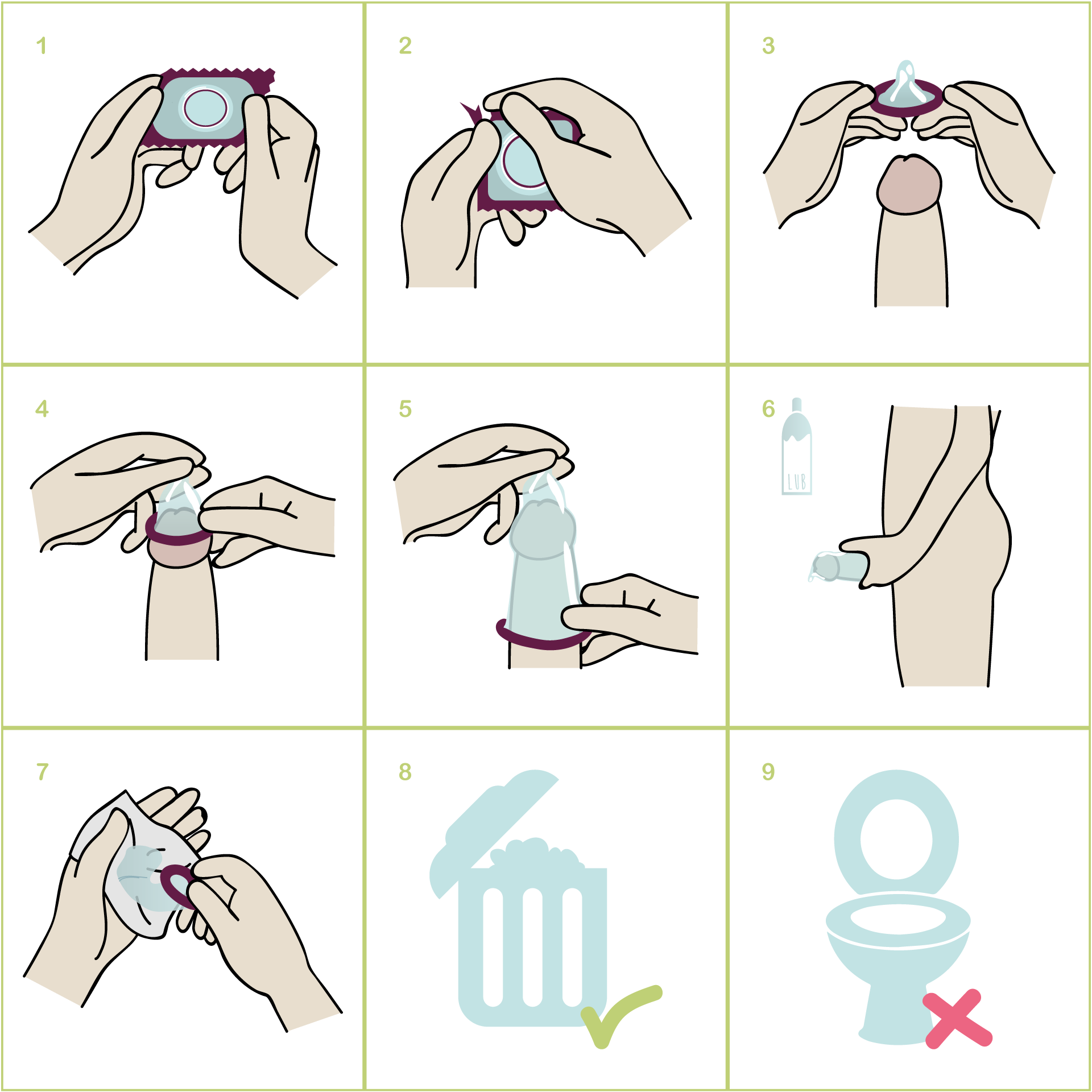Prevention
Protection
Fortunately, STIs are not a fatality! There are simple ways and means to avoid them and stop their transmission.

THE EXTERNAL CONDOM
You can find them free of charge in family planning centers, at certain festive events, from certain theme-based associations, etc. You can also buy them in supermarkets, drugstores (Di, Kruidvat, etc.), pharmacies, on the Internet (watch out for the source!), in dispensers outside pharmacies, etc. Good to know: Some mutual insurance companies cover up to 50 euros a year.
HOW TO USE AN EXTERNAL CONDOM?
Before putting on an external condom, check that it is not expired or pierced. Use onlyonly one condom at a time and with water-based or silicone lubricant. Never use the same external condom more than once.

THE INTERNAL CONDOM
Good to know:
- It can be put in the anus or vagina up to 6 hours in advance.
- It is often made of polyurethane, a hypoallergenic material.
- It is more resistant than latex.
- It provides better protection against STIs because it covers a larger external area (covers the anal area and the vulva, which reduces the transmission of STIs via skin-to-skin contact).
- For the person penetrating, it is similar to the sensations experienced during sex without a condom.
HOW TO USE AN INTERNAL CONDOM?

THE LATEX SQUARE
They can be ordered online and are also available from some LGBTQI+ and/or sexual health associations. They are available in latex or polyurethane, in a variety of colors and tastes.
It is also possible to make one yourself:

Risk reduction
- Get tested regularly (1 to 4 times a year depending on your practices, partners and frequency of sex).
- Try to avoid sex when your immunity is low (if you are ill, if you are not feeling well,...).
- Keep your hands clean and your fingernails short and sharp, to avoid hurting your partner during penetration or stimulation of the labia, anus, clitoris, glans...
- Talk to your partner about your sexual health and any sexual concerns you may have. Be honest and keep in mind that there is nothing taboo or shameful about talking about this.
- If you use sex toys, keep them clean: clean them before and after each use and use a condom if necessary.
- Take a chewing gum or breath freshener instead of brushing your teeth just before and after sex to avoid creating micro-lesions on the gums.
- For optimal comfort, to avoid overheating and the risk of irritation or even damage to the mucous membranes, use a lubricant.
- During your period, avoid blood-related sexual practices: be creative and discover other practices 🙂
- Take off your jewellery before making love.
- If you are among the most-at-risk populations for HIV, find out about PrEP.



